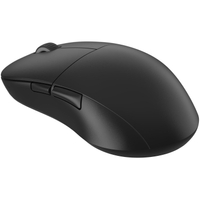Best gaming mouse in 2024: I've tested the very best mice and these are my top picks
The best gaming mouse for every game, budget, grip, and size.
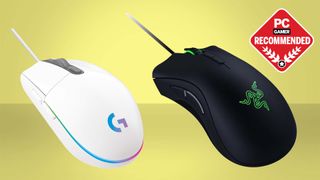
🖱️️ The list in brief
1. Best wireless
2. Best budget wireless
3. Best wired
4. Best budget wired
5. Best ergonomic
6. Best competitive
7. Best MMO
8. Also tested
9. How to spot the best deal
10. Q&A
11. How we test
12. Glossary
The best gaming mouse provides you with the most satisfying sweeps, clicks, and hand-feelTM possible. Whether it's lining up a perfect headshot in Call of Duty: Warzone 2.0 or allowing for pixel-perfect unit placement in League of Legends, the last thing you need is an unreliable rodent costing you the game. And if you're looking into a wireless gaming mouse, it should have all that and a long battery life, too.
The best wireless gaming mouse is the Razer DeathAdder V3 Pro. With its superb ergonomics, pin-sharp wireless performance and accurate sensor, it's a great pick for a wireless mouse without the drawbacks. The best wired gaming mouse is the Razer DeathAdder V2, which manages to combine high-speed performance and great ergonomics into one neat and tidy wired package.
A lightweight mouse will let you perform feats of digital greatness with minimal physical effort. MOBA and MMO players need a mouse with a wealth of buttons for all their bindings. As a team, we've tested dozens of gaming mice throughout the year, and this list highlights some of our favorites. Of course, you should pair your new mouse with one of the best gaming keyboards, to endow your cherished gaming PC with peripherals that show it off at its very best.

Dave's been wielding mice in anger since the hoary ol' days of the Amiga 500, Deluxe Paint, and Dune 2. He even plugged one into his Commodore 64 once, but he got over that. He's had his paws on gaming mice from every big manufacturer over the past couple decades, from ultra-lights and wireless, to many-buttoned horrors made for MOBAs. So, he know a thing or two about PC rodents.
The quick list

The best wireless
Tetherless and tireless, the DeathAdder V3 Pro is a fantastic evolution of a well loved mouse. With an impressive sensor and great wireless performance, there's not much to complain about aside from the price.
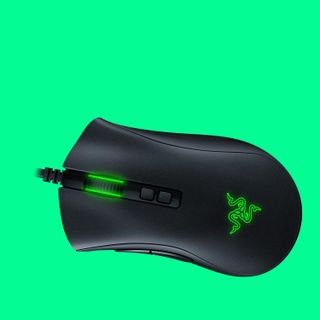
The best wired
As far as wired mice go, the DeathAdder V2 takes the biscuit. It's packing a great sensor, and it's great for a range of different hand sizes. It's not expensive either, especially since the updated version came out.
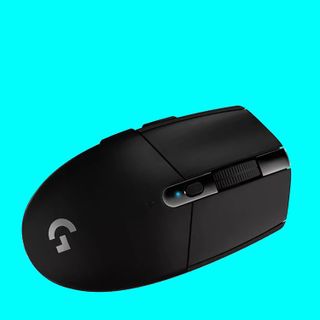
The best budget wireless
A superb back-to-basics gaming mouse, the G305 Lightspeed is a super affordable way to nab Logitech's best sensor yet. It is not a complex mouse, but it lasts ages on a single AA battery, and is light as anything.

The best budget wired
A super affordable mouse that even has RGB. The sensor's DPI may not be as granular as some out there, but it's small, uncomplex and super adorable in black or white.
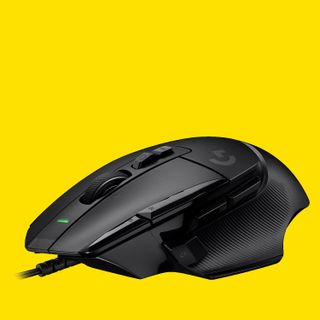
The best ergonomic
An ergonomic masterpiece, the G502 X has a good range of buttons to program—even a hot swappable one. Pair that with a sturdy build and an infinite scroll and it's a super easy wired mouse to recommend.

The best competitive
With Logitech's superb Hero 25K optical sensor, this mouse doesn't mess around. With Logitech's great build quality behind it, this light and classic-looking gaming mouse is a great choice for competitive gamers, and it's not too expensive, either.

The best MMO
Well kitted out, the Naga Pro is a snake of many faces. Literally, you can swap out the side panel for the optimum button arrangement for assigning your quick actions, and although it's a chonker of a mouse, it's easily the most versatile.
Recent updates
This page was updated on April 03, 2024 to make sure all our recommendations still stand, which indeed they do. We also added in some buy if/don't buy if sections to make it easier to make the best decision on the right gaming mouse for you.
The best wireless gaming mouse







Specifications
Reasons to buy
Reasons to avoid
✅ If you're looking for a great feel: The DeathAdder V3 Pro has a comfortable profile, with a micro-texture coating that feels great in the hand.
✅ If you want wireless without the drawbacks: It's lightning fast to respond, and thanks to an excellent sensor, as accurate as you like, too.
❌ If you're on a budget: With an MSRP of $150 it's a pricey little rodent, although the performance and comfort on tap makes it a compelling buy regardless.
❌ If you want flashy looks: For a Razer product, the DeathAdder V3 is downright subtle. Great for some, but RGB fans might want to look elsewhere.
With over 15 million sold since its inception, the Razer DeathAdder has certainly earned its place at the top of our best gaming mouse guide. There have been so many iterations and variants of the legendary mouse and with the newest one, the DeathAdder V3 Pro, Razer isn’t really messing with a winning formula. This is a mouse that focusses on the very best aspects of its predecessor, and that comes in the form of excellent ergonomics and pro-level performance.
Razer has taken the DeathAdder to the gym, slimming it down and pumping its muscles to create a mouse that has everything you need, and nothing you don't. The design changes are fairly subtle but, they make a big difference regardless. Gone are the massively flared-out mouse buttons and the slippery smooth shell in favour of a slimmer, less aggressive profile that has more in common with some of Razer's more recent mice than those of previous generations.
It's still very much a right-hander's mouse thanks to the slanted curve of the mouse's hump that leans ever so comfortably into your palm, although it's not quite as right-hand focussed as some. The shell also has a new micro-texture coating, which helps keep the now 63g mouse (a 25% drop from the previous DeathAdder) from flying out of your hand in the heat of battle.
As a clicker aimed at the highest echelon of esports professionals, Razer has put only its finest tech inside the V3 Pro. First up, it features Razer’s fastest-ever sensor: the new Focus Pro 30K Optical sensor with a 70G acceleration and a maximum speed of 750 inches per second for 99.8% accuracy. No one will play at such a ludicrous DPI but combined with a few tricks like Asymmetric cut-off, Motion sync, and Smart tracking, you’ll never claim that the mouse is why you lost that match.
For the main switches, the DeathAdder gets third-generation Razer optical mouse switches with a lightning fast 0.2ms response time and a stated life of 90 million clicks. That makes it incredibly fast to react, and should help with longevity concerns as well.
There’s no obvious difference between using the V3 Pro wireless or wired. But if you have doubts, Razer also has a special 4,000Hz Hyperpolling dongle that you can buy as an add-on, but I reckon most folks would simply use the bundled Speedflex USB cable to assuage their latency fears, although with these kind of wireless reactions on tap, only the pickiest of esport-ists would ever flag it as a concern.
One thing you won't get with the DeathAdder V3 Pro is a lot of buttons, as there are only five to choose from, unlike the multitude of options on the Logitech G502 X. Still, I like how chunky and accessible the side buttons are since I don’t have to awkwardly contort my thumb just to use them. I’m not too enamoured with the scroll wheel though. Sure it’s tactile with steps that are great for weapon switching in-game, but it gets very tedious to do lots of scrolling with this mouse.
Razer claims 90 hours battery life, and the little squeaker only needed a mere single charge in three weeks of usage, all the while being used as a primary mouse for gaming, productivity, and all the regular things you'd find yourself doing with a main PC mouse.
It's fast, comfortable, has excellent battery life, and is supremely accurate in the right hands. Very few gamers can lay claims to such hands though. For most of us, the $149 being asked for the DeathAdder V3 Pro is simply too much, and it feels somewhat akin to owning an F1 car and using it for grocery shopping and school runs. Still, if you fancy yourself an esports pro who needs a no-nonsense, hyper-focused slaying machine, the V3 Pro is the best wireless gaming mouse by far.
Read our full Razer DeathAdder V3 Pro review.
The best wired gaming mouse



Specifications
Reasons to buy
Reasons to avoid
✅ If you want speedy responses: Thanks to a brilliant sensor underneath and some optical switches, the DeathAdder V2 makes for a super-fast gaming mouse.
✅ If you're looking for comfort: A pleasing shape and good use of plastics makes this a great feeling mouse under your hands.
❌ If you've got a heavy-handed click: While the DeathAdder V2 is certainly built well, the buttons can feel a little bit flimsy.
❌ If you're on a budget: With a $70 price tag the Razer isn't cheap for a wired mouse, although you do get a lot of performance for the cash.
The Razer DeathAdder V2 improves on everything we loved about the DeathAdder Elite, itself one of the best gaming mice, and as a result it tops our list of the best wired gaming mice.
The most obvious improvement with the V2 over the original DeathAdder is the Focus+ Optical Sensor, the same one used in the excellent Razer Viper Ultimate Wireless. I’ll go into it in a second, but I was more impressed by the more subtle changes Razer has made for the V2. The first is the scroll wheel. Razer has a ridiculous name for the new design, "Instinctive Scroll Wheel Tactility," but the results are perfect. It’s exactly the right tightness. It spins smoothly, but you can still feel every notch of the turn, so you won’t accidentally scroll too many times.
The fact Razer is using a special wire it calls a "Speedflex Cable," also sounds insignificant, but turns out to be a big deal. I’ve used a version of the DeathAdder (the Expert) for years, and my one complaint is that the stiffer wire can sometimes pull the mouse to one side, depending on how it sits on my desk. The V2’s wire is the much more flexible, and as a result the DeathAdder V2 feels much more nimble on your desk, an important consideration when looking for the best wired mouse you can buy.
The left and right mouse buttons are more durable than the Elite, too. They’re optical, rather than mechanical (they use an infrared light beam to register clicks), which means they should deliver fewer misclicks, lower latency, and have a longer life. Razer reckons they’ll last 70 million clicks, rather than the 50 million for the old DeathAdder Elite. While I can’t possibly tell how accurate that number is, they certainly felt as responsive as I could ever need, and I never misclicked. In games of Fortnite and Escape from Tarkov, my shots felt instant, and I never had to worry about firing accidentally.
And then we come to the sensor, Razer’s 'party trick' (the DeathAdder Elite’s stats are in parentheses for comparison). It goes up to 20,000 DPI/CPI (16,000), tracks up to 650 inches per second (450), and has a resolution accuracy of 99.6 percent (99.4 percent). Those increased numbers may or may not mean much to you, because they’ll make very little difference in day-to-day performance. How often do you need to go above 16,000 DPI/CPI? Not often.
However, the left and right mouse buttons are a bit flimsy under your fingertips . They feel fine, sturdy even, when you’re clicking them straight on, but the slightest amount of sideways pressure makes them move slightly off-center. It makes me think they couldn’t take much of a beating, like throwing the mouse into your backpack before you head out on the road.
That being said, the build quality otherwise is grand, although if you're looking for a wired mouse for cheaper that still demonstrates excellent build quality and fundamentals, then the Logitech G203 Lightsync is worth consideration too.
Still, as premium wired mice go the Razer DeathAdder V2 is ultimately the very best we've tested to date, and a worthy winner of the title of the best wired gaming mouse.
Read our full Razer DeathAdder V2 review.
The best budget wireless gaming mouse




3. Logitech G305 Lightspeed
Our expert review:
Specifications
Reasons to buy
Reasons to avoid
✅ You want a pure, unfussy gaming mouse: The G305 Lightspeed focusses on the basics, and does them well: fast performance, clicky buttons, great accuracy.
✅ You want great battery life: While you'll need to swap out an AA battery rather than charge an internal unit, you will at least get 200 hours of usage out each one, which is pretty good going.
❌ You want a rechargeable battery as standard: While rechargeable AA batteries are relatively cheap, it'd be nice if the G305 had an internal unit instead.
❌ You want a lot of features: The G305 Lightspeed offers everything you need, but not a huge amount extra.
With the Logitech G305 Lightspeed, Logitech has created a high-performance mouse that doesn't cost the earth, and that makes it our best budget wireless gaming mouse. Despite the low cost, there's no compromise in performance or design.
The G305 Lightspeed might not be the latest model on the market, but don't let that bother you. A good mouse is a good mouse. It's still a great value option for day-to-day use, while its light weight makes it well suited to fast paced shooters where reaction time is paramount.
The G305 uses Logitech's Hero sensor, an iteration of the fantastic sensor Logitech's best mice, from the classic G502 down to the G Pro X Superlight. This sensor is capable of sensitivity range of up to 12,000 CPI (counts per inch). It can be adjusted via a button underneath the scroll wheel.
In addition to the CPI button, there are five programmable buttons. Of course there are the left and right click buttons, which are joined by scroll wheel and two side buttons. These are well placed for the righties out there.
It can last more than 200 hours on a single AA battery (which helps keep the cost down vs. being rechargeable).
Logitech has won praise for its 2.4GHz wireless technology and cross-device compatibility. Even though lag shouldn't be an issue, the G305 comes with a USB extension cable, allowing you to place the receiver close to the mouse. Dropouts or reception issues begone!
The small wireless dongle can be stored inside the body of the mouse, but critically, the left- and right-click buttons are separate pieces from the removable palm rest, ensuring a reliable and satisfying click. They're rated for 10 million clicks too, so if you're playing games that require button mashing, the G305 will serve you well. Not bad for a budget option, and something that'll likely last you for many years of heavy clicking.
The shape of the G305 is based on a small, ambidextrous design Logitech has been using for years. While components like the scroll wheel and buttons don't feel as premium as those in the G502, they're still far better than anything you'll find in a cheap gaming mouse. The quality and performance of the G305 are killer features for its price.
The best budget wired gaming mouse




Specifications
Reasons to buy
Reasons to avoid
✅ If you don't want to spend a lot on the basics: Sounds obvious, but the little Logitech is cheap, without feeling like it's lacking in quality.
✅ If you'd like some RGB lighting: Three zone lighting is a nice bonus for such an affordable mouse.
❌ If you want a ton of features: It's basic, and that's actually it's biggest strength. If you're looking for a lot of extra buttons and do-hickeys though, it'd be worth spending up a bit.
The Logitech G203 Lightsync is our go-to choice for the best budget wired gaming mouse, as it's got everything you need in a basic mouse setup for less, with some nice touches that elevate it above most of the other options at this sort of price point.
The G203 Lightsync sits within a hotly-contended category of budget-conscious gaming mice. Most of all it faces stern competition from Razer, whose lineup at this price, or thereabouts, now includes the Deathadder Essential, Basilisk Essential, and Viper Mini. However, the G203 Lightsync has enough about it to stand its own.
Its no-nonsense design refines everything down to the bare essentials, but in all honesty it still looks and feels like a premium product, just with a $40 price tag that raises eyebrows but does nothing to detract from the quality you feel when you use it on the daily.
The G203 Lightsync is a wired mouse—it's Lightspeed that you're looking for if you're after a wireless rodent. Instead, Lightsync denotes this mouse's compatibility with the Logitech G app and RGB lighting system, which is able to unify RGB lighting effects across compatible Logitech products. What's somewhat confusing is that non-Lightsync products are also able to integrate with said app to varying degrees.
The three titular lighting zones all lie within the thin strip that spans the rear palm rest, with the logo reflecting the same color as the middle RGB lighting zone. While it might've been nice to have independent control of the logo itself, the option does allow for gorgeous tri-color gradient effects sweeping from one side of the mouse to the other, which is a great looking effect for such an affordable product.
I used the white colorway model as our test unit, and while I can't tell you what it will look like in five years' time, I can tell you that it looks quite stunning out of the box.
Expect the same near-ambidextrous design with the G203 Lightsync as Logitech's Lightspeed then, complete with two buttons under whereabouts the pad of your right-hand thumb would sit. These aren't removable or swappable to the opposite side, which certainly comes as a surprising flaw in the Logitech G203's otherwise one-size-fits-all design. Nevertheless, it's a simple design, and one which Logitech aptly calls "tried and true".
While the G203 Lightsync is a very comfortable day-to-day handler, it's worth noting that you can get even more comfort and button options by spending a little bit more up the Logitech line on the Logitech G502 X.
That being said, this budget option is still nothing to sniff at. The unnamed "gaming-grade" sensor within the G203 offers a DPI range of 200-8,000, which should prove more than enough for all but the most colossal of 4K monitors—at which point you might want to turn to something with a little more grandeur than the G203. The sensor is more than suitable for decent and consistent gaming and turns up a clean sheet in mouse sensor tests.
It might be basic, but the Logitech G203 is really everything you need in a good gaming mouse, with all the excess fat trimmed off. There are fancier, there are faster, but if all you're looking for is a great mouse on a budget, then the G203 makes the best pick for a budget gaming mouse that feels and looks anything but.
Read our full Logitech G203 Lightsync review.
The best ergonomic gaming mouse



Specifications
Reasons to buy
Reasons to avoid
✅ If you want exceptional ergonomic comfort: The G502 X is massively comfortable, thanks to an ergonomic shape paired with a well-placed thumb rest that keeps your hand in the optimum position.
✅ If you want great build quality, without the heaviness: A good mouse doesn't have to be heavy to feel like a substantial and well-constructed product, and the G502 proves it.
❌ If you're looking for silence: The Lightforce switches may be positive and decently quick, but they make a bit of a clunk that might annoy your living companions if they're in the same room.
At first glance Logitech's G502 X gaming mouse may not appear much different to its predecessors, that's just as well as they were great performers too. However, the thing that it nails down hardest is comfort, and as a result it's the best ergonomic gaming mouse we've used by far.
Logitech has doubled down on making the Logitech G502 X lighter than its predecessors. It weighs in at 89g, which is remarkably light given the features on offer, yet feels none the worse for being so featherweight underneath your fingertips.
There's no LED system behind the Logitech G symbol, or any RGB at all. And while that's a little disappointing that you can't program damage flashes on your mouse, for example, it makes sense to appeal to the FPS audience more. While the scroll wheel is now plastic instead of metal to improve the weight, it still comes with an infinite scroll, one of our absolute favourite features and a joy to use for productivity tasks.
The G502 X may not come with an updated sensor compared to the previous model, but the switches are now Lightforce hybrid switches. They're opto-mechanical, so they combine optical speed with a mechanical actuation. They sound a little clunky but that's likely due to the lack of internal components tucked in the mouse.
As far as pricing goes, it's being shipped at roughly the same price as the earlier models: $80 for the wired version, $140 for the wireless version, and $160 for the G502 X Plus. The latter is the only one with RGB, which pushes the weight up 106g, over the wired version. It's certainly one way to separate the company's more utilitarian users from the rest, but $20 for some RGB LEDs does seem a little steep.
Those of you looking for something a bit cheaper with some similar RGB goodies might want to check out the Logitech G203 Lightsync above, although you will be missing out on some of the features here.
I personally regarded the previous model as the perfect mouse, and it's almost a shame to remove the weight it had behind it, though I do admit the ergonomic changes are likely better for my hand. The new ergonomics do have the potential to alienate those with larger hands or who don't enjoy the sideways slant, and the weight reduction has meant RGB likers like me would need to spend substantially more.
Either way, this wired version here is the evident choice for the sensible and comfort-inclined among us. It's light, comfortable, immensely well-built and just the thing for all-day usage, making this our absolute top pick for ergonomic mice.
Read our full Logitech G502 X review.
The best competitive gaming mouse




Specifications
Reasons to buy
Reasons to avoid
✅ If you want simple, efficient, and fast: There's no frills on the Logitech G Pro, and those looking for an unfussy design that gets to the point will appreciate the simplicity.
✅ If you want a great sensor: The Hero 25K sensor is a stellar performer, wrapped up here in a package that lets the performance do the talking.
❌ If you want a lot of features: Nope, just fast performance and the basic standard buttons here. For some that'll do just the trick, and for others, you'll be looking for more.
When it comes to competitive gaming, you're going to be looking for fast, light, un-fussy and super-responsive, and as a result let me present to you a mouse that nails all those categories with aplomb—The Logitech G Pro. It's our best competitive gaming mouse pick for a reason, as it's a speedy, focussed design with none of the frills to get in your way.
The left and right buttons are responsive, clicky and satisfying to use, without being overly loud, while the side buttons sit in exactly the right place under your thumb for instinctive usage, without having to stretch or strain to find them.
While no-one would call the G Pro flashy, it's a handsome, professional looking design that's likely to suit most setups, with some subtle RGB that hints at its gamer credentials rather than shouts them from the rooftops. The Hero 25K optical sensor has a maximum DPI of 25,600, which makes it plenty fast and accurate in a variety of mice, but paired with the simple design here means you can get on with the business of being super-accurate in your games without any extra buttons or design features getting in your way.
That being said, if it's wireless competitive performance you're hankering for, I'd always give a shout out to our favorite wireless gaming mouse, the Razer DeathAdder V3 Pro. It's also massively fast and relatively uncomplicated, but those of you with a concern for ultimate reaction times may prefer the reassuring nature of this wired unit. You do you, but for what it's worth, the Razer is still about as fast as you can get in a wireless mouse.
The Logitech G Pro isn't going to wow you with its looks, but what will impress you is how it plays. It's a tried and true design, so long as you're not expecting a boatload of features.
However, if you don't care about thumb rests or extra buttons, and need quality gaming performance that will last for less than $100, the Logitech G Pro is your rodent. It's the best competitive mouse for e-sport players, MMO fiends, or anyone looking for lightning fast response without the fuss.
Read our full Logitech G Pro review.
The best MMO gaming mouse





Specifications
Reasons to buy
Reasons to avoid
✅ If you're looking for ultimate button customisation: Those magnetic side panels give you so many potential options, it's mind-boggling.
✅ If you're looking for large and in charge: The Naga Pro is big, it's true, but it's also very comfortable, and suits those with larger hands.
❌ If you want something basic and affordable: It's a bit pricey, but all those extra features had to come with a cost somewhere. If you don't need the extra buttons, this might not be the mouse for you.
The Razer Naga Pro has a party-trick, and it's a doozy. While it's got great performance and aesthetics, swappable side plates that enable a multitude of button configurations mean this is the perfect mouse for MMO players, with more potential configurations than you can shake a stick at.
What you get here is an MMO mouse and a wireless mouse. A 2-for-1 deal we can't turn down. The Naga Pro drops the cable for Razer HyperSpeed Wireless and Bluetooth connectivity. It also picks up optical mouse switches and the over-the-top 20,000 DPI sensor.
The overall design of Naga Pro stays close to the Naga Trinity it replaced but has gained a bit of weight to accommodate the new tech. The Naga Pro is 7mm wider and heavier than the Trinity at 117g, but thanks to the 100% PTFE feet, it glides smoothly across most surfaces. The bigger mouse also takes some getting used to, requring a full palm grip to get the most out of it. Luckily enough, the contoured mouse buttons and a rest for your ring finger make it easy and comfortable to hold onto, while textured rubber grips for the thumb and pinky also play their part in making this a very pleasing object to hold.
I'm a fan of Razer's optical-mechanical switches, which use light to register clicks instead of mechanics, and that makes them really fast. The switches are durable too, with a lifespan of 70 million clicks, but of course, the Naga Pro has plenty of other buttons too. The three swappable plates have 2, 6, and 12 buttons which you can remap to your heart's content.
Remapping buttons in Razer Synapse is child's play—a simple point-and-click affair. You can do anything from simple keyboard shortcut bindings to complex game macros as well as adjust DPI stages, polling rates, lift-offs, power management, and of course, Razer Chroma lighting.
Obviously, none of this matters if you have a laggy experience. Thankfully, the HyperSpeed Wireless doesn't disappoint. I used vsynctester.com to quickly measure lag and I was very impressed. The test records how quickly the cursor responds to your mouse movements. In wired mode, I recorded 6ms while the the Naga Pro's wireless connection managed 6.1ms—a 0.1ms difference. The Bluetooth was slower by 4-6ms but only a keen eye would notice it in daily use.
The Naga Pro's optical sensor has also been updated to the Razer Focus+ 20,000 DPI sensor with 650 IPS tracking. This is far beyond anything most people will ever need—I max out at 8,000 DPI.
Now, with all this technical wizardry, battery life is a legitimate concern but Razer's claim of a 150-hour battery life proves true. I've been using this review unit for the past week—averaging 14 hours daily and I still have about 35% battery left. That involved a ton of gaming, work, and swapping back and forth between wireless and Bluetooth.
You're really not going to find anything quite like the Razer Naga Pro. It's got customisation options that other mice can merely dream of, and it's sheer flexibility and performance can transform your MMO experience. It's the best MMO mouse by far, and that's a fact.
Read our full Razer Naga Pro review.
Best gaming keyboard | Best CPU for gaming | Best graphics cards
Best VR headset | Best wireless gaming mouse | Best wireless gaming keyboard
Also tested
<a href="https://target.georiot.com/Proxy.ashx?tsid=8432&GR_URL=https%3A%2F%2Famazon.com%2FMountain-Makalu-Max-Mouse-connectivity%2Fdp%2FB0C85K6L81%2F%3Ftag%3Dhawk-future-20%26ascsubtag%3Dhawk-custom-tracking-20" data-link-merchant="Amazon US"" target="_blank">Mountain Makalu Max
The Makalu Max is almost a great gaming mouse, but I find the wireless experience frustrating in a way its rivals aren't. The customisation options are great, it feels comfortable in the hand, and the sensor is reliable and accurate, but it's just a little short of being the full package.
Read our full <a href="https://www.pcgamer.com/mountain-makalu-max-review/" data-link-merchant="pcgamer.com"" data-link-merchant="Amazon US"" target="_blank">Mountain Makulu Max review.
<a href="https://target.georiot.com/Proxy.ashx?tsid=8432&GR_URL=https%3A%2F%2Famazon.com%2FGlorious-Gaming-Model-Wireless-Mouse%2Fdp%2FB0BLF5NH32%2F%3Ftag%3Dhawk-future-20%26ascsubtag%3Dhawk-custom-tracking-20" data-link-merchant="Amazon US"" target="_blank">Glorious Model O 2 wireless
The Makalu Max is almost a great gaming mouse, but I find the wireless experience frustrating in a way its rivals aren't. The customisation options are great, it feels comfortable in the hand, and the sensor is reliable and accurate, but it's just a little short of being the full package.
Read our full <a href="https://www.pcgamer.com/glorious-model-o-2-review/" data-link-merchant="pcgamer.com"" data-link-merchant="Amazon US"" target="_blank">Glorious Model O 2 Wireless review.
<a href="https://target.georiot.com/Proxy.ashx?tsid=8432&GR_URL=https%3A%2F%2Famazon.com%2FENDGAME-GEAR-Wireless-Programmable-Buttons%2Fdp%2FB0BVKZ2RR3%2F%3Ftag%3Dhawk-future-20%26ascsubtag%3Dhawk-custom-tracking-20" data-link-merchant="Amazon US"" target="_blank">Endgame Gear XM2we
A humble, solid pointer that’s silky smooth on your mat. The XM2we is just a little expensive against the competition.
Read our full <a href="https://www.pcgamer.com/endgame-gear-xm2we-review/" data-link-merchant="pcgamer.com"" data-link-merchant="Amazon US"" target="_blank">Endgame Gear XM2we review.
<a href="https://target.georiot.com/Proxy.ashx?tsid=8432&GR_URL=https%3A%2F%2Famazon.com%2FHyperX-Pulsefire-Haste-Lightweight-Connectivity%2Fdp%2FB0BX52C4LN%2Fref%3Dsr_1_1%3Fcrid%3DDEZPVC0RZCNR%26dib%3DeyJ2IjoiMSJ9.zFf6hViXHYrI-DC13Z3ZyxDL3s0t-uCdbQihHLG1r4xHvgC9hua2e91VQYtE6B3ZVExrmWh9raKrzRU2YWME7bP3zk0LplK4sJA4iVzfrZuGNOQrdhZRTAIfbfxCFUXADpjbcDk8xsG5RaF2gWr_GM5I9qpKQi3A4m0cvsqlwYV2s9Ay4lGdyMHLApH1-1db-jepyGgSxiZk_TuSJcwXc9Gf0tOL5HMvn3yA1CPRG_41IMvDUIJ8f9Dl2RBW8KwdMAfa4pzVzC51IEgSG8-hdn-JgjRjGM5KIdqYWZxVy6Q.wb_3kHVwqC57BIG0pM2x7P3-RI6mM2LWQo4ViGHZTN8%26dib_tag%3Dse%26keywords%3DHyperX%252BPulsefire%252BHaste%252B2%252BWireless%26qid%3D1712161401%26s%3Delectronics%26sprefix%3Dhyperx%252Bpulsefire%252Bhaste%252B2%252Bwireless%252Celectronics%252C142%26sr%3D1-1%26th%3D1%26tag%3Dhawk-future-20%26ascsubtag%3Dhawk-custom-tracking-20" data-link-merchant="Amazon US"" target="_blank">HyperX Pulsefire Haste 2 Wireless
The HyperX Haste 2 brings you the performance and battery life you want in a lightweight wireless gaming mouse. The $90 price tag is also good enough to surpass some of its software woes.
Read our full <a href="https://www.pcgamer.com/hyperx-pulsefire-haste-2/" data-link-merchant="pcgamer.com"" data-link-merchant="Amazon US"" target="_blank">HyperX Pulsefire Haste 2 Wireless review.
How to spot the best deal
Where are the best gaming mouse deals?
In the US:
- Amazon - Often some savings on PC gaming peripherals
- Walmart - Usually some good savings on mice
- Newegg - Big brand gaming mice for cheap
- Best Buy - Great place to look for a cheap gaming mouse
In the UK:
- Overclockers - Plenty of peripherals to choose from
- Scan - Lots of sales events including gaming mice
In Australia:
- Mwave - A huge range to choose from
- Computer Alliance - Mice to suit every budget
- Amazon - Keep an eye out for some steep discounts
Best gaming mouse Q&A
Why should I choose a gaming mouse over the average optical mouse?
For one thing, gaming mouse sensors are designed to be more responsive and accurate. With adjustable (or no) smoothing and acceleration, your aim will stay true. Gaming mice are more accessible because of their programmable buttons and versatility over a traditional mouse.
Is a wireless mouse good for gaming?
Historically the answer was always: no. The wireless connection, though convenient, was used to add extra latency to the connection compared with a wired cable, which meant input lag in games was 'a a thing'. For reference, that is also seen as a 'very bad thing' in competitive online games.
But modern wireless interfaces, primarily the 2.4GHz radio connections, have zero perceptible difference in latency compared to a standard wired connection. Blind tests have been done with pro gamers using wired and wireless mice, and if the most sensitive players around can't tell the difference, we're confident you won't be able to either.
Bluetooth connections, however, can still introduce unwelcome input lag into a gaming situation, so that's best avoided. In modern wireless gaming mice, however, Bluetooth is only used as a low-power backup option.
What should I look out for in a gaming mouse?
When deciding on a mouse, your priority should be finding one that's comfortable for your hand. There are numerous sizes, shapes, and weights to consider. You might have the coolest-looking mouse with the most practical array of buttons, but if it's not comfortable for you, you won't be able to settle in with it. There are plenty of ambidextrous gaming mice and gaming mice for lefties in the list, too—if the goofy stance is more your style.
In the last few years, most gaming mice have also adopted very high DPI sensors (or, more accurately: CPI), so even a budget mouse will likely perform well. Most of these sensors can handle extremely high DPI counts at up to 20,000 DPI when realistically, you'll play on a much lower sensitivity—generally under 2,000 DPI. The consensus is not to worry about that number too much. Instead, concentrate on finding a mouse with the ideal shape and weight, and obviously, one that'll match your stylish set-up.
Pro gamers generally recommend lighter, more straightforward mice with few buttons to get in the way. Lighter mice won't fatigue your wrist and can easily glide across the mouse pad at high speeds. Anything below 100 grams is often ideal for competitive mice. But something has to be said about how powerful you feel at the helm of a nice heavy mouse.
How we test gaming mice
We've used enough gaming mice to have a good feel for build quality, button placement, and shape. Our opinions on those aspects of mouse design are naturally subjective, but they're also well-informed. The tricky part of testing gaming mice is analyzing the other part of the equation: tracking performance, jitter, angle snapping, acceleration, and perfect control speed, and determining how each of those issues affects the experience of using a mouse.
For that, applications such as Mouse Tester come in handy. We used this software to see if we could spot any glaring issues with the mice we used. In every gaming mouse we tested, though, angle snapping and acceleration were disabled in the mouse drivers by default (though a mouse can still exhibit acceleration from issues with the sensor itself) and never encountered any glaring performance issues.
For gaming, we primarily test mice with Destiny 2 and Apex Legends and twitchier shooters like Quake Champions to see how our performance stacks up against other mice. We scrutinize the cursor movement and responsiveness for lag, jitter, and other issues.
We use each mouse with its wireless receiver plugged into close by USB port, giving it the best possible wireless situation to work with. We also tested the wireless receivers plugged into our test system a few feet away with my legs in between, increasing the opportunity for lag and interference.
Jargon buster
Grip refers to how you hold the mouse. The most common grips are palm, claw, and fingertip. Here's a good example of how each grip works.
CPI stands for counts per inch, or how many times the mouse sensor will read its tracking surface, aka your mousepad, for every inch it’s moved. This is commonly referred to as DPI, but CPI is a more accurate term. The lower the CPI, the further you have to move the mouse to move the cursor on the screen.
Jitter refers to an inaccuracy in a mouse sensor reading the surface it’s tracking. Jitter often occurs at higher mouse movement speeds or higher CPIs. Jitter can make your cursor jump erratically, and even slight jitter could wreck a shot in an FPS or make you misclick on a unit in an RTS.
Angle snapping, also called prediction, takes data from a mouse sensor and modifies the output to create smoother movements. For example, if you try to draw a horizontal line with your mouse, it won’t be perfect—you’ll make some subtle curves in the line, especially at higher sensitivities. Angle snapping smooths out those curves and gives you a straight line instead. This is generally bad because it means your cursor movements won’t match your hand’s movements 1:1, and angle snapping will not be useful in most games. Thankfully, almost all gaming mice have angle snapping disabled by default.
Acceleration is probably the most reviled, most scrutinized issue with gaming mouse sensors. When a mouse sensor exhibits acceleration, your cursor will move faster the faster you move the mouse; this is often considered bad because moving the mouse slowly six inches across a mousepad will move the cursor differently than moving the mouse rapidly same distance. This introduces variability that can be hard to predict.
Perfect control speed, or malfunction rate, refers to the speed at which the mouse can be moved while still tracking accurately. Most gaming mice will track extremely accurately when moved at slow speeds, but low CPI players will often move their mice large distances across the mousepads at very high speeds. At high speeds, especially at high CPIs, not all mouse sensors can retain their tracking accuracy. The point at which the sensors stop tracking accurately will differ between CPI levels.
IPS measures inches per second and the effective maximum tracking speed of any given sensor is rated too. Not to be confused with the gaming monitor panel type by the same name, the higher the IPS of any given mouse, the better it can keep up with high-speed movement and maintain accuracy.
Lift-off distance is still a popular metric in mouse enthusiast circles, though it does not affect most gamers. LOD refers to the height a mouse has to be raised before the sensor stops tracking its surface. Some gamers prefer a mouse with a very low lift-off distance because they play at very low sensitivity and often have to lift their mouse off the pad to reset it in a position where they can continue swiping. With a low LOD, the cursor will not be moved erratically when the mouse is lifted.
PC Gamer Newsletter
Sign up to get the best content of the week, and great gaming deals, as picked by the editors.

Dave has been gaming since the days of Zaxxon and Lady Bug on the Colecovision, and code books for the Commodore Vic 20 (Death Race 2000!). He built his first gaming PC at the tender age of 16, and finally finished bug-fixing the Cyrix-based system around a year later. When he dropped it out of the window. He first started writing for Official PlayStation Magazine and Xbox World many decades ago, then moved onto PC Format full-time, then PC Gamer, TechRadar, and T3 among others. Now he's back, writing about the nightmarish graphics card market, CPUs with more cores than sense, gaming laptops hotter than the sun, and SSDs more capacious than a Cybertruck.
- Kizito Katawonga
- Jorge JimenezHardware writer, Human Pop-Tart
- Jacob RidleySenior Hardware Editor
- Samuel Horti
- Andy EdserHardware Writer
Most Popular




